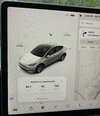dduffey
Member
Increasing the ball mount height in either direction would increase the moment applied to the hitch receiver when starting/stopping. It's probably not a big deal if you're not towing at max load capacity, which most people won't be, but I imagine that's why it's there.
I've towed a lot with my Impreza, but found it incredibly annoying with the 6" rise ball mount that it would wiggle a lot when coming to a stop (flat bed trailer, 1-2 motorcycles), but the OEM hitch design didn't allow any of the "anti rattle" clamps to fit. I ended up using some old free depth gages and using them as shims to reduce the rattle. Given the tight space of the opening, have you guys had any luck with them on the Y?
I use a tow hitch tightener with a single bolt. I can't put the bolt on the bottom side as designed, so I have it on the right side of the square receiver. It does make it tight for putting on the chains, but it has been working great.
Amazon.com: NIXFACE 2" Heavy Duty Hitch Coupling Clamp - Anti Rattle Device Tightener Receiver: Automotive
Buy NIXFACE 2" Heavy Duty Hitch Coupling Clamp - Anti Rattle Device Tightener Receiver: Receivers - Amazon.com ✓ FREE DELIVERY possible on eligible purchases
www.amazon.com



